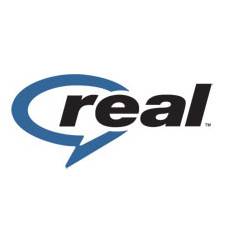It was supposed to have been the heart of a concept called NGV – a video codec that utilized the same principles used by H.264, but produce a tighter stream by almost half. It was touted as the final “Hail Mary” pass for RealNetworks to re-enter the competitive space that was quickly being won over by Adobe, and where Microsoft and Apple still had their feet in the door. During 2008, Real’s engineers were showing off potential stream size contraction of as much as 30%.

Now, the next-generation video effort that only culminated in RealVideo 11 in 2010, after much of the online world had left Real behind, is being regenerated by Intel. This morning, Intel announced the acquisition of an undisclosed number of RealNetwork patents related to next-generation video. And this afternoon, an Intel spokesperson confirmed to RWW that it will be offering employment to seven of Real’s NGV engineers.
Intel’s Sumner Lemon told us his company was not in a position to reveal exactly what it’s planning. What we do know is that Intel intends to continue the NGV project as part of its Software and Services Group, and hopes Real’s engineers will join Intel. It is too soon to say what NGV will become, though the least likely prospect, from what we gather, is that Intel will try to build some type of media player software – the line of business which Real simply could not resurrect.
A more likely prospect is that Intel wants to get back in the video engineering game with a codec that it can license to others. Real will be granted the rights to continue to use its former codecs for its own products, according to Intel’s Lemon, but not perpetually and not without limits. Real’s principal product continues to be a media player, although early last year it signaled its intent to offer a kind of media synchronization service – another effort which has gone nowhere since.
With Real stepping back, Intel could conceivably license new and perfected NGV codecs for use in video recording devices, in home video consoles, and for use in certain elements of software that folks tend to use every day. Lemon was very cautious in pointing out that it’s too early to say whether NGV could play a role as another embeddable format in Web browsers, both for PC and mobile devices. Although HTML5’s original goal was to present a single, open, non-proprietary video codec for use by the <VIDEO> tag, developers have since had to settle for a single, standard methodology to access whatever codec the browser’s makers have chosen to support. Microsoft prefers H.264, though Google still leads the initiative to push its open source WebM codec as an alternative.

Lemon stated that NGV may not necessarily compete with H.264 in all of its markets – that may be for product managers to decide later. Yet it is not inconceivable that Intel could add one more bundle of letters to the online codecs mix. This as growing adoption of HTML5 by developers, and in turn by browser makers, is showing the first signs of dissolving the once-impenetrable lock on the online video market held by Adobe Flash.
In its last quarterly Form 10-Q filed last November, RealNetworks stated it earned $8.8 million in its fiscal third quarter through the sale of things such as ringtones, on-demand videos, and “inter-carrier messages” (ways for wireless users on different networks to text one another), and another $1.6 million through the sale of mobile games. It lost about $2 million during the same period from licenses for RealPlayer, which is currently on version 15.





















